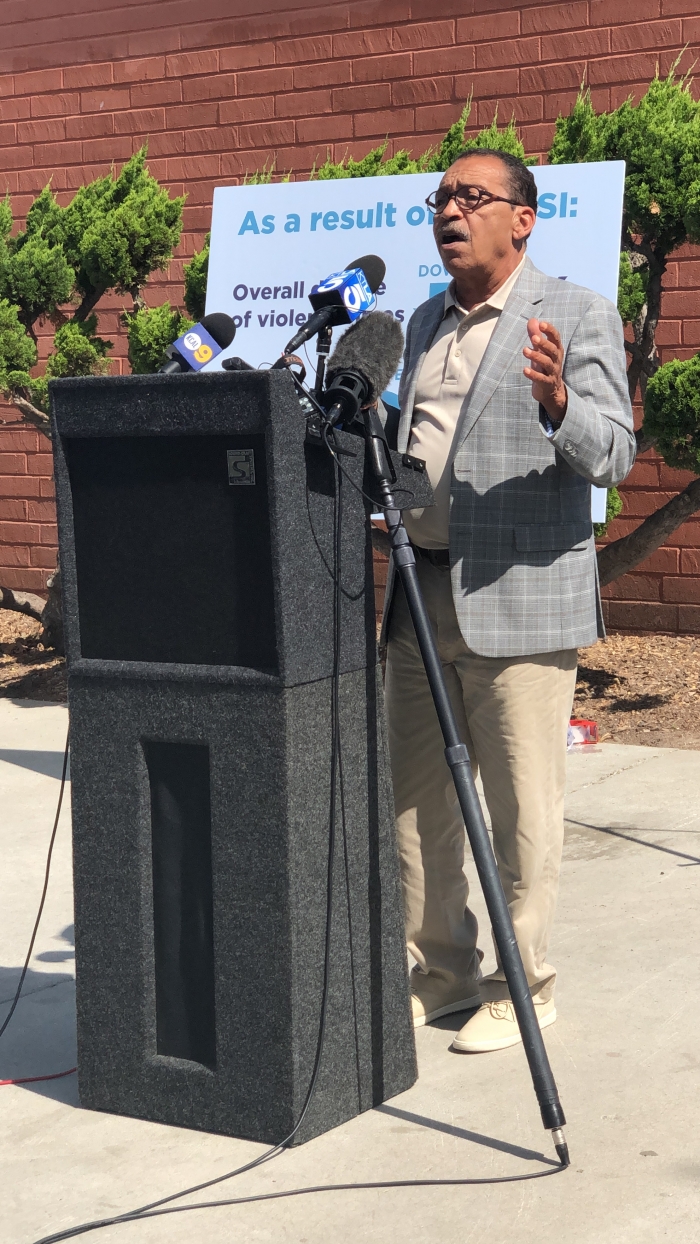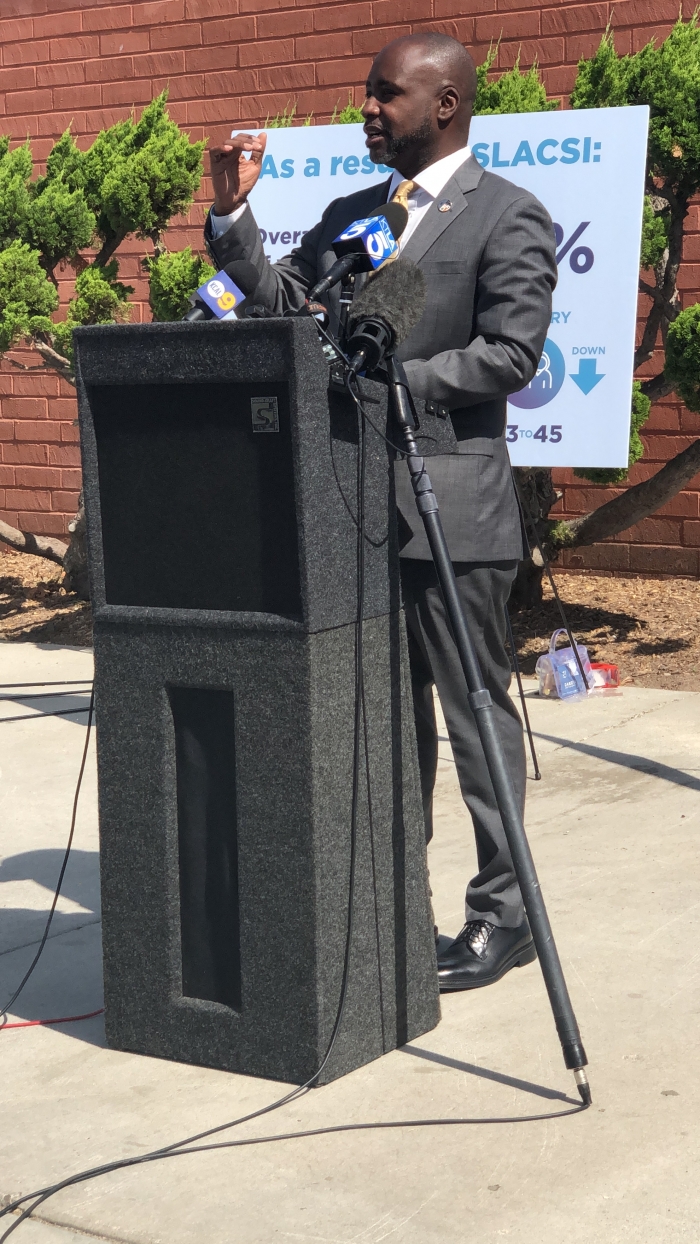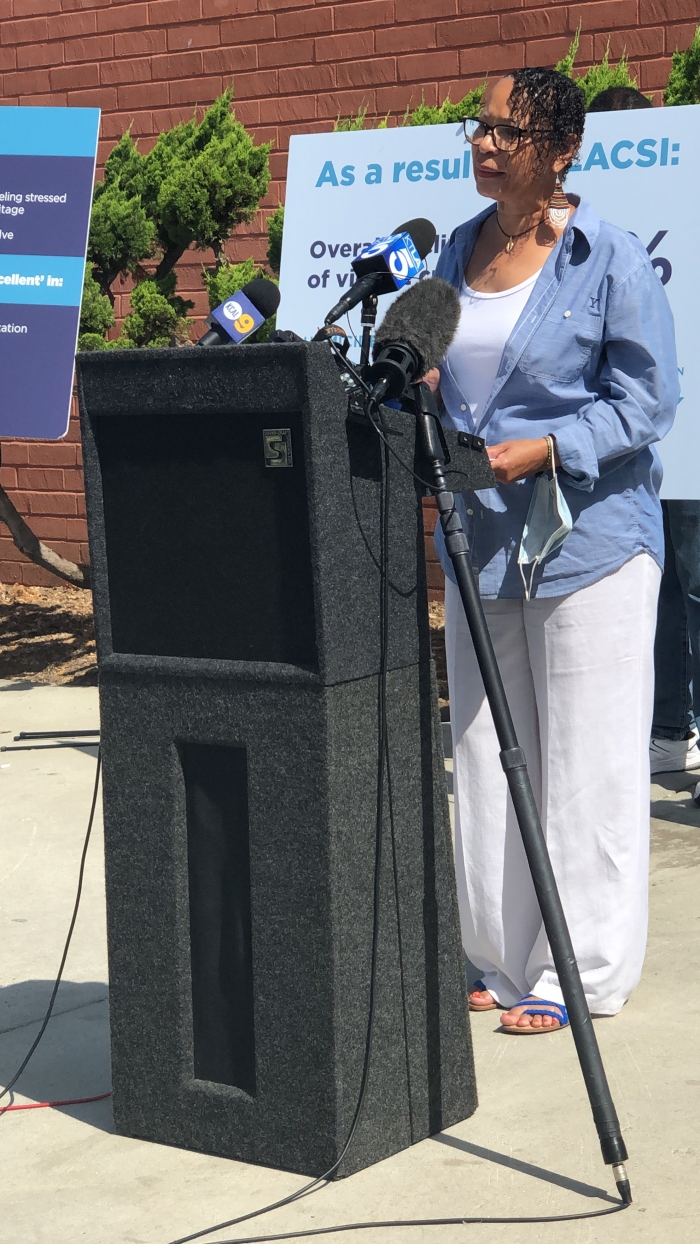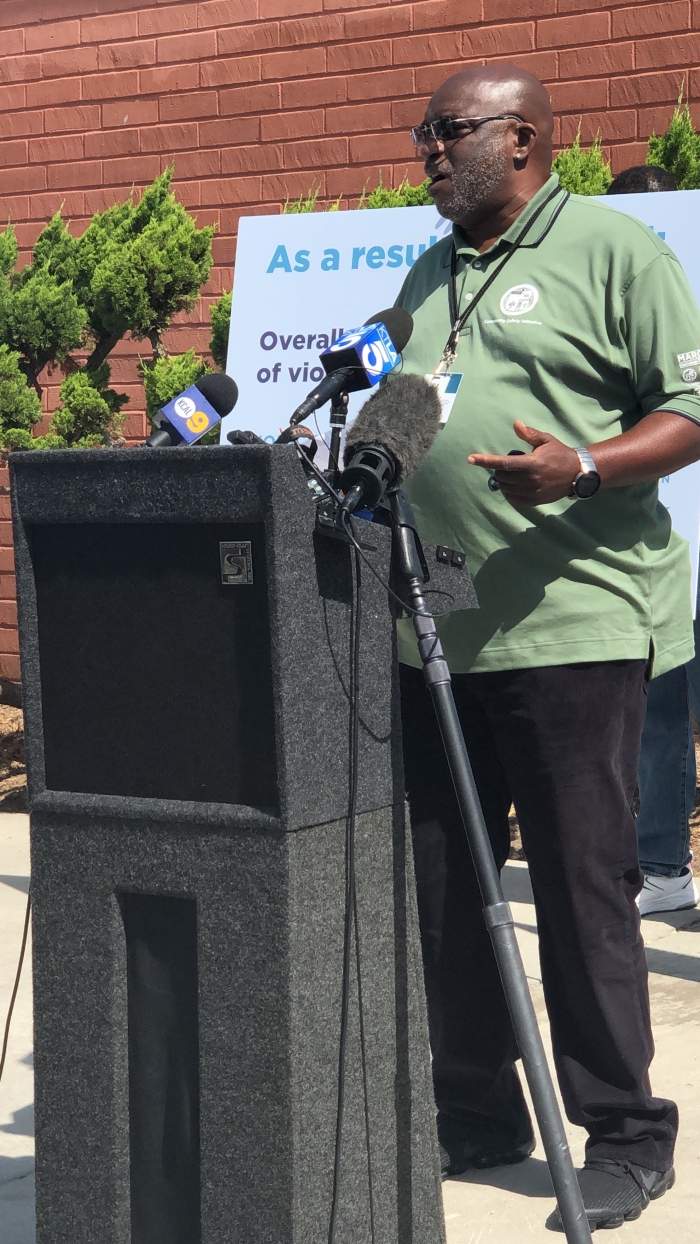Crime rate down 8% in selected areas

Today, the future of community protection is being reimagined after countless disparities continue to come to past and throughout the history of public safety. Due to the current policing system being rooted in chattel slavery, the present structure is entangled with racial profiling, extreme use of force on people of color, and a lack of trust or knowledge of the community. The cries for change are showcased in catastrophic moments, such as the city uprisings in 1992 and most recent global protests and rise of awareness of George Floyd; people are demanding public officials, on every level, to redesign public safety.
Los Angeles public officials reimagine public safety; there are a multitude of program services offered to uplift community that goes far beyond the aspect of protection, the South L.A. Community Safety Initiative includes: “Healing Circles, which provides mental health resources to South L.A. residents traumatized by gun violence and Youth Entrepreneurial Workshops which provides training sessions for youth seeking to start their own businesses,” found within the SLACSI press release.

On Tuesday, July 14, parents and children from all spectrums of the city joined Los Angeles Public Lawmakers at a South L.A. Community Safety Initiative (SLACSI) news conference, to commemorate the second year of the program’s vision of public protection. The organization enlists residents to monitor 12 parks in L.A. The results show that there was reduced crime in the selected areas by 8%. The initiative also reduced “over policing” of South L.A.
Areas of misconception that created a snag in concise protection from the city’s police force, stems from the reasons they are called. “Over-policing” is tethered to overwhelming agendas that do not match the skill sets of law enforcement. Most escalations do not require the restraints or interrogation from the police, in most cases people who are from the neighborhood, who are familiar with those around them, can have a gentle approach to resolving minor confrontation or mental health related incidents.

Led by Council member Marqueece Harris-Dawson, the program has sprouted many opportunities for community engagement and improvement over the span of two years. The one-million-dollar directive was set to prevent gun violence during the summer, where the neighborhood would generally see an increase in hostility and crime. SLACSI continues to nourish the soul of the community with positive reinforcement from public leaders such as Council members Herb Wesson, Harris-Dawson, and Curren Price, piloting the wave of change that starts within the collective.
Working on the mental health of the neighborhood, SLACSI partnered with the Psychology Applied Research Center at Loyola Marymount University (LMU-PARC) to develop Healing Circles. Clinical Psychologist Dr. Cheryl Grills explained, “Living in a society where your life isn’t valued, where resources are inadequate for basic need, where the world seems to have forgotten about you and your not sitting at the table, making decisions that will affect your life; the struggle ‘to be’ is a source of stress.”
Grills continued, “Just to exist is a source of stress, and the struggle for an empowered existence in society is infused with assumption about your inferiority, about your criminality … is not ok.” Dr. Grills addressed how that much weight applied is like stretching a rubber band past its limits, it will snap. The healing circles deal with psychological effects of a failed system among the people.
The definition of the healing circles implies a process that is led by the community, creating ownership. There is intergenerational connection, which is available to all members of the community. The work of healing circles is to have a “safe space” where everyone can exhale, release, and de-stress with tools that will be additional armor after the meetings.
Harris-Dawson explained the program’s ingredients consisted of community members, mental health workers, and the staff of the parks and recreation centers. 10th District Council member, Herb Wesson stated, “We, on the City Council, in the midst of demonstrations and protests, we decided that we wanted to reimagine public safety.”

The ‘Green shirts’ are part of the uniform worn by Intervention Workers, to indicate they are a member of the Community Safety Initiative. It represents growth and new beginnings in local parks; residents wear their green shirts with pride and monitor the grounds where the youth can play with no fear of the dangers that may have lurked around the corner.
Interventionist, Quincy Mitchell has been with the Community Safety initiative since it began two years ago, “Me and a group of my homeboys and homegirls that grew up in the community, came together to figure out a way that we can bring the crime rate down,” Mitchell explained that he was part of the upbringing that could lead to violence and community sabotage.
He formed a group called “Advocates for Peace and Urban Unity” on Vermont and 84th street. He also wears his green shirt and keeps surveillance around the community. The ingenious system within the community safety initiative staff is made of the people who live in the area. Members are familiar with every nook and cranny of their environment as Lead Interventionist, Leon Gullette explained, “We know all the hot spots; our job is to monitor the park,” he shared. Gullette continued, “We know what we are looking for and we are used to dealing with gangs and stuff like that.”
Another intervention worker, Johnny Ross, Jr. broke down the typical day that is carried out, “Right now we are making sure our community members don’t come up here and do anything or hassle the kids while they’re in the park trying to enjoy themselves.” Ross described his route of walking around the park and remains vigilant in the front entrances to see who’s coming in and who’s coming out. “Our main thing is to seek safety for these young men and young ladies”.








